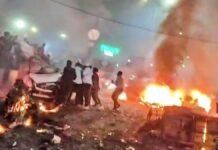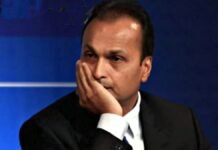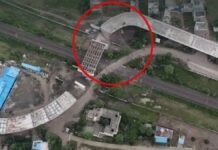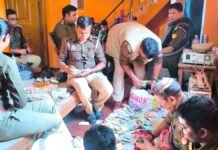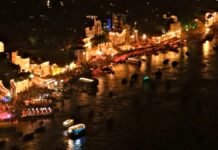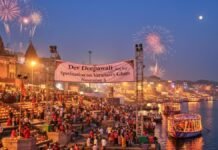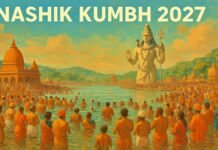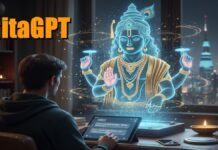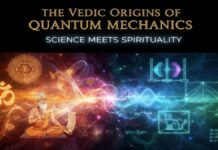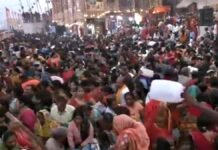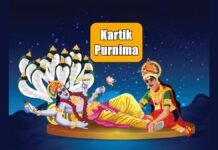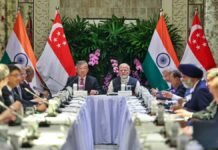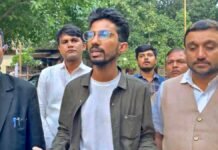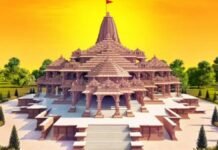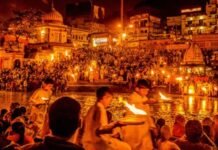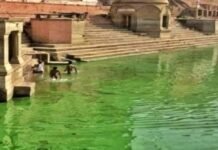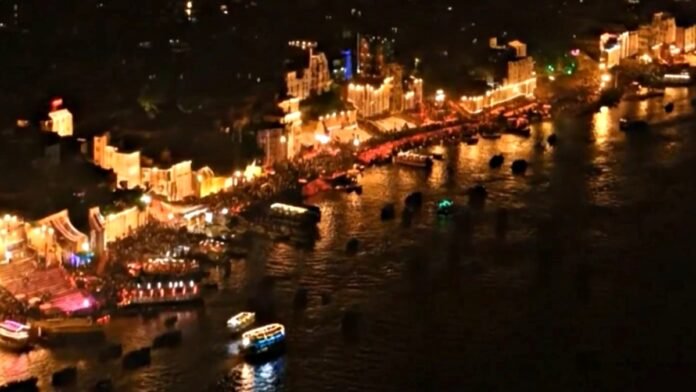
Key Points:
- CM Yogi Adityanath inaugurated Dev Deepawali by lighting first lamp at Namo Ghat on November 5, 2025
- 84 ghats illuminated: Assi Ghat to Rajghat with 21+ lakh diyas (over 2.1 million oil lamps)
- Pradoshakal Muhurat (most auspicious window): 5:15 PM to 7:50 PM duration 2 hours 35 minutes
- Kartik Purnima (full moon night) marks Lord Shiva’s victory over demon Tripurasura
- Grand Ganga Aarti ceremonies, classical music performances, cultural programs across all major ghats
- Fireworks displays synchronized over the Ganges River; boat rides fully booked for 30+ days in advance
- Unprecedented crowd management: Police, NDRF teams deployed; zero-tolerance traffic restrictions implemented
- Security: 1,400+ police personnel, 400+ NDRF volunteers positioned across 84 ghats
- Municipal sanitation teams cleaned 100+ kilometers of ghats pre-festival; decorations took 3 weeks preparation
- Devotees performed deep-daan (lamp offerings) at Assi, Dashashwamedh, Sheetla, Namo, and Samne ghats
- Expected 10+ lakh visitors over 48-hour celebration window
- First time CM Yogi personally inaugurated festival from Namo Ghat (newly constructed Namo Ghat dedicated 2021)
- Broadcast live internationally; viewership expected to exceed 100 million across digital platforms
Varanasi: Chief Minister Yogi Adityanath arrived at Namo Ghat on the evening of November 5, 2025, for the ceremonial inauguration of Dev Deepawali, a moment when Varanasi’s spiritual energy reaches its annual crescendo. Standing at the newly renovated Namo Ghat (constructed and dedicated as part of CM Yogi’s “Kashi Vikas” urban development initiative), he lit the inaugural lamp that ceremonially ignited millions of oil lamps positioned across the city’s 84 sacred ghats.
Witnesses described CM Yogi’s expression as visibly overwhelmed with emotion and spiritual reverence, a powerful photographic moment capturing the convergence of state administration and Hindu spiritual devotion. The inauguration marked the official commencement of the 2-hour 35-minute Pradoshakal Muhurat window (5:15 PM to 7:50 PM), the most auspicious timeframe for ritual performances and spiritual observances.
The Sacred Festival: What Dev Deepawali Represents
Dev Deepawali, meaning “the Diwali of the Gods,” commemorates Lord Shiva’s cosmic victory over Tripurasura, a demon blessed with extraordinary powers who terrorized heaven and earth. According to Hindu scriptures, the demon’s arrogance and cruelty exhausted the patience of divine beings, prompting the gods to seek Lord Shiva’s intervention. In response, Shiva mounted a celestial chariot and, with a single arrow, destroyed Tripurasura’s three floating cities, an act symbolizing divine power’s triumph over destructive evil.
This mythological victory is believed to have been celebrated by the assembled gods, who descended to earth and bathed in the sacred Ganges River, a ritual reenacted every year as millions of devotees light diyas on Varanasi’s ghats, symbolically inviting the gods to celebrate alongside humanity.
The Visual Spectacle: 21+ Lakh Diyas Transform Sacred Geography
The defining visual element of Dev Deepawali is an almost incomprehensible concentration of light. Between Assi Ghat and Rajghat, encompassing 84 distinct bathing ghats across Varanasi’s 3-kilometer sacred riverfront, volunteers, priests, and municipal workers positioned over 21 lakh (2.1 million) earthen diyas on every available step, landing, and architectural surface.
This extraordinary light configuration transforms Varanasi’s geography into a phosphorescent ribbon viewed from across the Ganges or from boats positioned in the river; the ghats appear to glow with a continuous, wavering illumination that reflects across the dark waters, creating the visual impression of doubling the light intensity through mirror-effect reflections.
Photography and film crews positioned strategically documented this scene for international broadcast, with multiple camera angles capturing the scale, complexity, and spiritual intensity of the celebration.
The Ganga Aarti: Synchronized Ritual Across All Ghats
Simultaneously across the illuminated ghats, thousands of priests performed synchronized Grand Ganga Aarti—an elaborate ritual involving rotations of large brass lamps filled with burning ghee, synchronized chanting of Vedic mantras, and coordinated movements creating hypnotic visual and auditory patterns.
The Aarti was performed simultaneously at major ghat complexes, including Dashashwamedh Ghat (Varanasi’s primary tourist destination), Assi Ghat (southern terminus), Sheetla Ghat, Namo Ghat (newly constructed), and Samne Ghat, with careful coordination ensuring that multiple Aarti ceremonies did not create cacophonous overlap but rather complementary spiritual harmony.
Deep-Daan: Devotional Lamp Offerings to Mother Ganges
Devotees performed deep-daan (lamp offerings to the sacred river), immersing individual diyas into the Ganges while chanting prayers and mantras. This personal ritual, repeated millions of times across the 48-hour celebration window, transformed the Ganges surface into a glowing field of flickering flames, an ethereal vision reported by boat operators as spiritually transformative for even secular observers.
The tradition of deep-daan carries personal significance. Devotees offer lamps as prayers for deceased family members, spiritual aspirations, health blessings, and expressions of gratitude toward divine forces. The aggregate effect of millions of individual offerings creates a collective spiritual energy that participants describe as transcendent.
Fireworks and Cultural Programming: Multi-Sensory Celebration
Coordinated fireworks displays illuminated the night sky above Varanasi for 45-minute durations at 6:30 PM and 8:45 PM, with careful sequencing ensuring that pyrotechnic explosions reflected off the Ganges surface and created a dramatically enhanced visual spectacle. The coordination required consultation with aeronautical authorities to ensure that fireworks trajectories avoided low-flying aircraft and did not create hazardous debris patterns.
Classical music performances featuring sitar, tabla, and vocal recitations by renowned Indian musicians filled the auditory landscape, with portable amplification systems broadcasting performances across multiple ghat locations to ensure spectators at distant locations could simultaneously experience the cultural programming.
Local dance groups performed classical Indian dance forms (Bharatanatyam, Kathak, Odissi) as cultural programming, integrating spiritual movement into the broader celebration. These performances were choreographed to respond to the Aarti rhythms and fireworks timings, creating an integrated artistic experience coordinating music, dance, ritual, and pyrotechnics.
Unprecedented Crowd Management: Security and Logistics at Scale
The celebration attracted an estimated 10+ lakh (1 million+) visitors across the 48-hour festival window, creating unprecedented logistical challenges for crowd management, safety, sanitation, and security infrastructure.
Varanasi Police deployed 1,400+ personnel across the 84 ghats, with particular concentration at Dashashwamedh, Assi, and Manikarnika ghats, where crowd density reached maximum concentrations. National Disaster Response Force (NDRF) teams (400+ volunteers) were positioned with life-saving equipment, including emergency rafts, first aid stations, and rescue personnel trained in water rescue operations.
The Religious Significance: Why Dev Deepawali Matters Beyond Tourism
While Dev Deepawali has become increasingly recognized as a tourist attraction (with international media coverage and substantial Government promotion), the festival retains core religious significance for Hindu devotees. The lighting of diyas represents a spiritual act—direct participation in commemorating divine victory over evil, personal offerings seeking spiritual blessings, and communal participation in a religious celebration connecting humans across centuries to ancient spiritual traditions.
For orthodox Hindu practitioners, the Pradoshakal Muhurat window carries exceptional spiritual potency. Ritual texts assert that prayers, meditations, and spiritual practices conducted during this specific temporal window receive amplified cosmic responsiveness—a belief driving attendance by advanced yogic practitioners and serious spiritual seekers alongside casual tourists.
Historical Context: Dev Deepawali Through Centuries
Historical records document Dev Deepawali celebrations in Varanasi extending back centuries, with Mughal-era accounts and colonial-period documentation describing similar patterns of ghat illumination and spiritual gatherings. However, the industrial-scale modern celebration—with organized municipal participation, systematic ghat access management, and international media coverage—represents a relatively recent phenomenon dating primarily to the past 2-3 decades.
CM Yogi Adityanath’s 2017-present administration has systematically invested in ghat infrastructure improvements, drainage system upgrades, and institutional promotion of Dev Deepawali as a signature cultural event—a strategic positioning that has substantially increased both domestic and international recognition of the festival.
The Emotional Impact: CM Yogi Overwhelmed
Observers at the inauguration ceremony noted that CM Yogi appeared visibly moved by the spiritual grandeur of the celebration—a human moment captured in photographs showing his eyes gazing across the illuminated ghats with apparent emotion. Political analysts noted that the imagery fulfilled a particular political narrative: CM Yogi as a Hindu nationalist politician deeply connected to Hindu spiritual traditions and demonstrating genuine emotional investment in religious observances rather than purely instrumental political positioning.
International Attention and Broadcast Reach
Multiple international news agencies (BBC, Reuters, Al Jazeera, AFP) dispatched crews to document Dev Deepawali 2025, with live broadcast feeds transmitted globally in real-time. Digital platforms, including YouTube, Instagram, and regional TV channels, conducted 24-hour live streaming, generating an estimated viewership exceeding 100 million across all platforms, a phenomenon rendering Dev Deepawali one of the globally most-watched religious celebrations in real-time.
This international visibility reflects broader trends of Hindu cultural practices gaining increased global awareness and appreciation, particularly as Indian diaspora communities maintain cultural connections and as international audiences discover Hindu spiritual traditions through digital media.
The Spiritual Experience: Transcendence at Scale
For millions of attendees, whether devout practitioners, cultural participants, or spiritual tourists, Dev Deepawali 2025 delivered a profound emotional and spiritual experience. The combination of 21+ lakh diyas, synchronized ritual performances, fireworks, music, and the collective devotional energy of a million people gathered in spiritual communion created sensory and emotional intensity that participants described as transformative.
This emotional intensity,y whether interpreted through psychological, spiritual, or neurological frameworks, represents Dev Deepawali’s core significance beyond tourism revenue or political symbolism: a collective human experience of transcendence, community, and connection to spiritual dimensions believed to extend beyond ordinary material reality.





